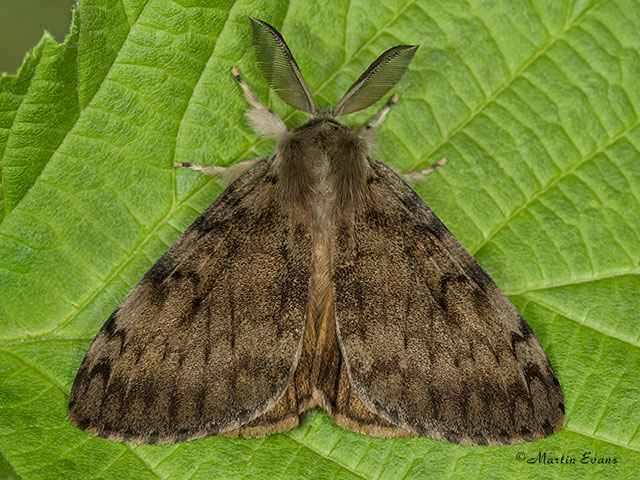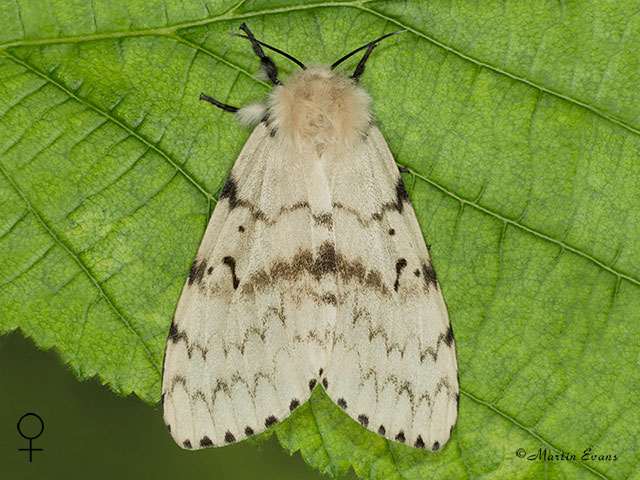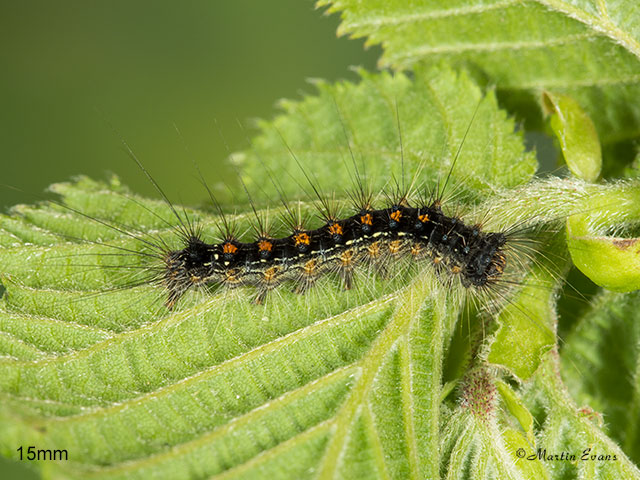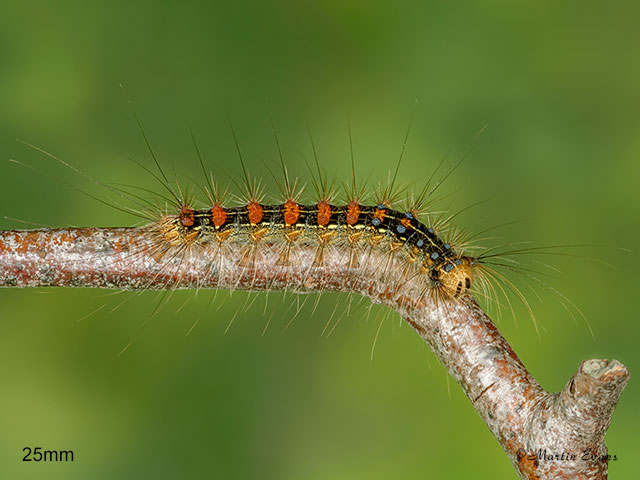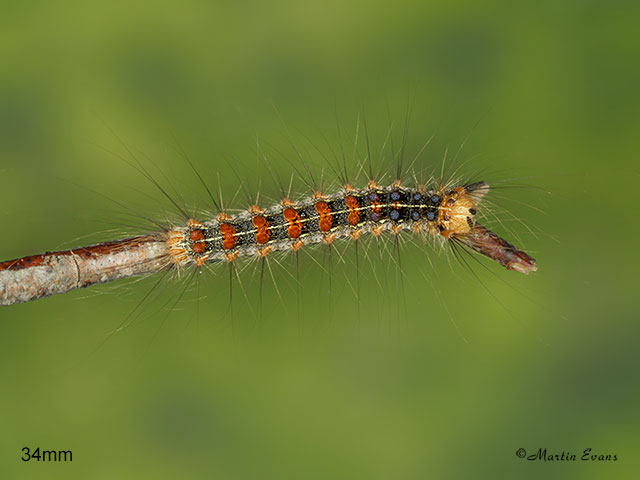Erebidae
72.011 Gypsy Moth Lymantria dispar (Linnaeus, 1758)
Immigrant / Extinct former resident / Adventive / Locally Naturalised
Similar species: There is a form of Black Arches Lymantria monacha with a grey rather than white background colour that looks superficially similar to a male Gypsy Moth.
Forewing: M 20 to 24mm, F 31 to 35mm
Habitats: The endemic form lived in acid fens. Naturalised populations inhabit woodland, scrub, hedgerows, parkland and gardens.
Habits: The male flies in the day and comes to light. The heavy females of the endemic population were almost flightless as are many of the European females.
Foodplant: This species will feed on most deciduous trees, but especially apples, plums and sallows. The young larvae are wind dispersed over several miles. The extinct native population fed on Bog Myrtle and Creeping Willow. Pupation takes place in a flimsy cocoon spun in the foliage of the foodplant, behind bark or in the leaf litter.
On the European mainland it has also been recorded feeding on oak, Hawthorn, poplars and elms.
